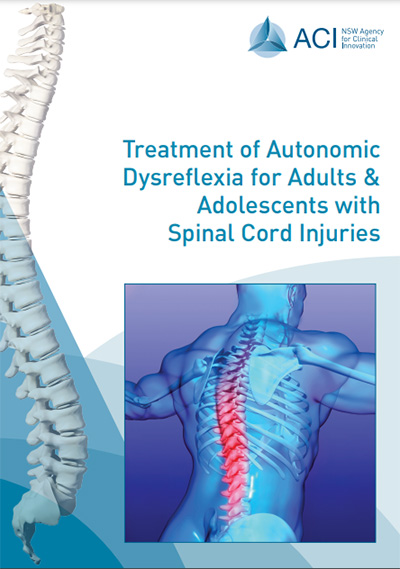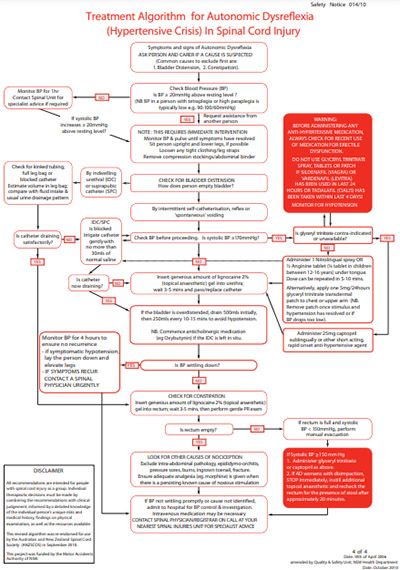Autonomic dysreflexia is a medical emergency that can occur in people with spinal cord injury at or above the sixth thoracic (T6) level.
It is a sudden and severe rise in blood pressure that can result in intracranial haemorrhage, fits, arrhythmias, hypertensive encephalopathy and even death. This potentially life-threatening condition requires immediate and decisive action.
These resources support clinicians to understand and treat autonomic dysreflexia.

Treatment of autonomic dysreflexia for adults and adolescents with spinal cord injuries
Published: February 2014. Next review 2023.
Learn the pathophysiology of autonomic dysreflexia and understand how to treat it.

Treatment algorithm for autonomic dysreflexia (hypertensive crisis) in spinal cord injury
Published: October 2010. Next review: 2023.
Follow the process to treat autonomic dysreflexia.
A summary of autonomic dysreflexia symptoms, causes and treatment is available as a fold-out card. Email ACI-Spinal@health.nsw.gov.au for more information.
Training videos on autonomic dysreflexia
Watch these videos by Dr James Middleton to learn more about autonomic dysreflexia.